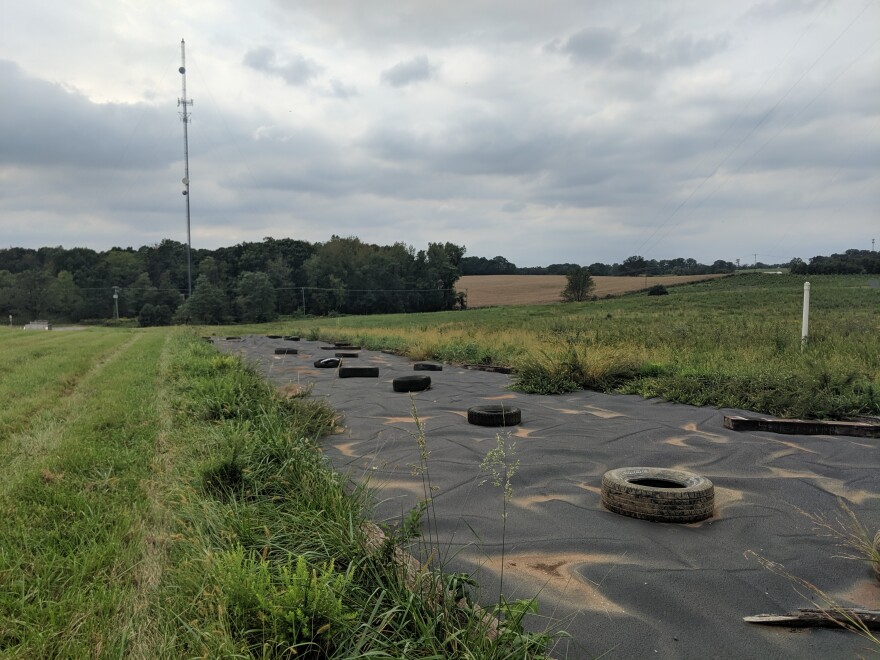
The Shenandoah Valley is home to vast trees, plants, and wildlife that contribute to the growing Virginia environment. Sari Carp is the Executive Director for the non-profit Sustainability Matters, which works to take initiatives for the environment.
The non-profit, although 18 months old, is hard at work in conserving environmental resources, and producing long term solutions for our local area.
Sari spoke with WMRA’s Chris Boros who asked her to explain the program.
* This story had production assistance from WMRA's Sara Amin.

Sari Carp: Sustainability Matters is a new regional conversation non-profit. We’ve only been around for about 18 months, but we have been very busy since then, doing about 80 different programs and events, that we’ve organized around conservation education and community building.
WMRA: So, 18 months, that’s it so far?
SC: 18 months, yeah.
WMRA: How did you get this idea to start this group? Why?
SC: Good question, we ask ourselves that a lot! You know, it was a bunch of us who had worked together in different conservation organizations or different projects, and we decided that we wanted something a bit more unified, that built bridges that basically said; alright were not going to preach to you, we’re going to make conservation accessible, something that anybody can do. And that we were going to do programs that were fun that built community, that the same people would come to time and time again and start becoming friends and working together. And it seems the time and the place were right, because it’s just taken off and were working in 8 counties so far.
WMRA: And right now, your big project is “Make Trash Bloom”.
SC: Yes, making trash bloom.

WMRA: Tell me about this.
SC: We are literally planting pollinator habitat, on top of the landfill. Essentially what happens when something can’t be recycled, it goes into a giant pit in the ground. And they then get covered up with clay, sealed up for eternity, and sit there as a giant heap. And usually what’s seeded on top is grass, because that’s just what’s always been done. But, pollinators are hugely under threat, and what they need is native plants, they need native perennials, and meadows of flowering native perennials, and native grasses. And so, a landfill where you have the dead space, where you need something that provides erosion control but where the roots don’t go more than three feet deep, is a perfect spot for that. So, the ultimate goal is to have all the trash blooming in the Shenandoah Valley!
WMRA: How unique is this project?
SC: This is a very special project. There have been a number of decommissioned landfills, but what we’re talking about doing, is doing something a bit more proactive and doing it on a working landfill and having every trash cell going forward, be covered in the pollinator habitat.

WMRA: Is it possible at one point, maybe in the future, the entire landfill could be this?
SC: While the landfill is still active, the trash cells that are already covered are mandated, Federally I believe, that they do not kill what’s on there. So, you can’t see the habitat in with fescue, which is turf grass. You know this isn’t a landfill specific initiative, you can do this at home.
WMRA: That was my next question, could someone just do this in their backyard?
SC: Absolutely!
WMRA: When you approached the landfill about this idea, what was their initial reaction?
SC: Yay! We don’t have to mow!
WMRA: Oh okay, so they were all about it!
SC: They were, you know there were concerns. You know, they had to check with DEQ, and make sure.

WMRA: What’s DEQ?
SC: The Department of Environmental Quality. What happens is that the giant heap of trash shifts and moves, and they compact it a couple more times before it get permanently sealed. So, that’s maybe every three years or so, and these habitats really take several years to get fully established. So, you have to plant it where you’re going to leave it for the long term.
WMRA: What else is next for the group, besides “Make Trash Bloom”? What else is on the pipeline?
SC: We have a fall tree and acorn ID walk and talk, planned at Carrier Arboretum on the 30th. We have a sold out mushroom walk… like everything is sold out pretty much.
WMRA: Wow, it’s taken off then.
SC: Yeah, our stuff fills up far in advance. So, I kind of don’t want to even tell them about the mushroom walk!



